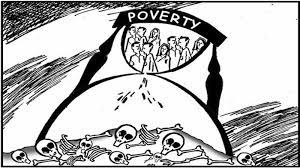Nepal makes significant progress in reducing multidimensional poverty

Kathmandu / Oct 18: Nepal has substantially reduced poverty between 2011 and 2019, according to the Global Multidimensional Poverty Index (GMPI) released globally on Monday.
The country’s MPI value fell from 0.185 in 2011 to 0.111 in 2016 to 0.075 in 2019, and the incidence of poverty fell from 39.1 percent to 25.7 percent to 17.7 percent. This means that only around 5.13 million people now live in poverty as per the GMPI measure.
This progress has been accompanied by notable improvements in sanitation, which saw the largest reduction in the percentage of people deprived in this indicator—from 34.1 percent to
16.3 percent to 6.6 percent among poor people and from 60.6 percent to 35.9 percent to 21.4 percent among the whole population. Improvements in sanitation are highly correlated with improvements in other health indicators, such as child nutrition, child mortality and access to drinking water.
According to the report, a growing body of evidence points to the positive health benefits of having access to an improved sanitation facility and drinking water on child health and wellbeing through lower diarrhoeal incidence, a leading cause of child mortality in developing countries.
Similarly, improved water and sanitation interventions can improve children’s growth and nutritional status; poor nutrition accounts for nearly 45 percent of deaths among children under age 5 worldwide.
The recent progress in reducing deprivations in sanitation and drinking water might have driven the improvement in children’s nutrition and the decrease in child- hood mortality in Nepal, contributing to the recent decline in MPI value.
The government of Nepal has endorsed a multi-sectoral approach to tackling the pervasive undernutrition problem among children under age 5. The Multi-Sectoral Nutrition Plan I (2013–2017) and II (2018–2022) targeted both nutrition-specific and nutrition-sensitive programs implemented through health, education, water and sanitation, and agriculture and livestock agencies.
Most nutrition programs have been based on multi-sectoral approaches to improve food security, nutritional practices, WASH facilities, behavioral change and communication strategies to address the underlying causes of under nutrition. In recent years, the share of the government’s budget allocated to the WASH sector has increased considerably, to NPR 44.2 billion in 2021/2022, up 1.3-fold from 2016/2017. In 2019 Nepal declared itself free of open defecation after a decade-long effort at various levels to make improved toilets accessible to every household.33
The most common deprivation profile in Nepal in 2019 is one where people are deprived in years of schooling, cooking fuel, housing and assets. Nearly 1 in 10 poor people in the country experiences this profile. An integrated, high-impact policy response might include a housing package that considers energy concerns and home improvement grants, paired with targeted lifelong learning programs among poor households.
